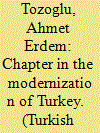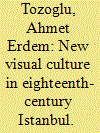| Srl | Item |
| 1 |
ID:
178785


|
|
|
|
|
| Summary/Abstract |
This article examines building of the Seyhan Dam (1953–1956) in Turkey. Both Turkish and American agents played significant roles for planning and implementation of the project during the Cold War era. The 1950s provided necessary conditions in Turkey for the rise of new actors and developments to facilitate transition from limited modernity, which had mostly manifested in urban areas, to a more comprehensive state of modernity extended to rural areas. This extension had irrevocable impacts on the natural landscape as well. By referring to some patterns of modernization, this article posits building of the Seyhan Dam as a significant example to demonstrate how state-led modernization extended its scope by means of taming rivers and opening of plains for agriculture in the Cilician (Çukurova) region from late Ottoman to Republican periods.
|
|
|
|
|
|
|
|
|
|
|
|
|
|
|
|
| 2 |
ID:
174148


|
|
|
|
|
| Summary/Abstract |
This article examines the construction and expansion of a less-known royal shore kiosk complex in Istanbul, namely the Shore Palace near the Cannon Gate (Topkapısı Sahil Sarayı) or Summer Harem, which was built on the outskirts of the royal palace complex in the eighteenth century, to interpret the changing features of royal residential culture and spatial practices. In this article, I aim to propose a new thematic frame based on the central role of the issue of visuality to examine the shifting cultural paradigm of eighteenth-century royal patronage. The eighteenth century witnessed the physical expansion of the complex and renovation of the furnishings several times and the official records of these activities provide us with invaluable information for the visual construction of these buildings, which were torn down after a devastating fire in 1862. Furthermore, the choice of location and all physical changes in the interiors and gardens demonstrate the spatial results of the changing codes of visual culture in the cityscape. In this respect, examination of this case enables us to discuss how the new visual culture was adopted and exercised in and around the royal palace gardens by the royal court members.
|
|
|
|
|
|
|
|
|
|
|
|
|
|
|
|